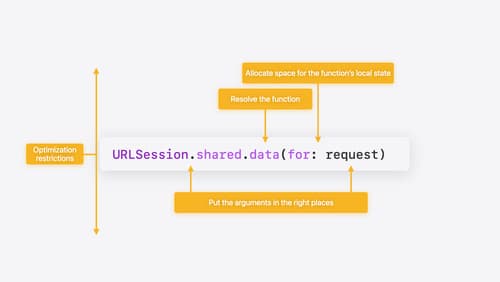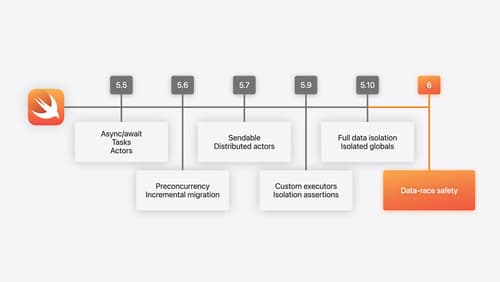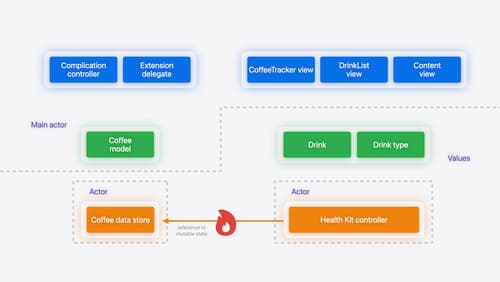解釋 let 和 var
Asked on 2025-03-06
1 search
In Swift, the keywords let and var are used to declare constants and variables, respectively.
-
let: This keyword is used to declare a constant. Once a constant is assigned a value, it cannot be changed. This immutability helps in making the code easier to reason about and prevents accidental changes to values that should remain constant. For example, if you declare a variable withlet, Swift guarantees that the value will not change. -
var: This keyword is used to declare a variable that can be changed after it is initialized. Variables declared withvarare mutable, meaning you can assign a new value to them at any point in their lifecycle.
For more details, you can refer to the session A Swift Tour: Explore Swift’s features and design (02:35) where these concepts are discussed.

Explore Swift performance
Discover how Swift balances abstraction and performance. Learn what elements of performance to consider and how the Swift optimizer affects them. Explore the different features of Swift and how they’re implemented to further understand the tradeoffs available that can impact performance.

What’s new in Swift
Join us for an update on Swift. We’ll briefly go through a history of Swift over the past decade, and show you how the community has grown through workgroups, expanded the package ecosystem, and increased platform support. We’ll introduce you to a new language mode that achieves data-race safety by default, and a language subset that lets you run Swift on highly constrained systems. We’ll also explore some language updates including noncopyable types, typed throws, and improved C++ interoperability.

Migrate your app to Swift 6
Experience Swift 6 migration in action as we update an existing sample app. Learn how to migrate incrementally, module by module, and how the compiler helps you identify code that’s at risk of data races. Discover different techniques for ensuring clear isolation boundaries and eliminating concurrent access to shared mutable state.
